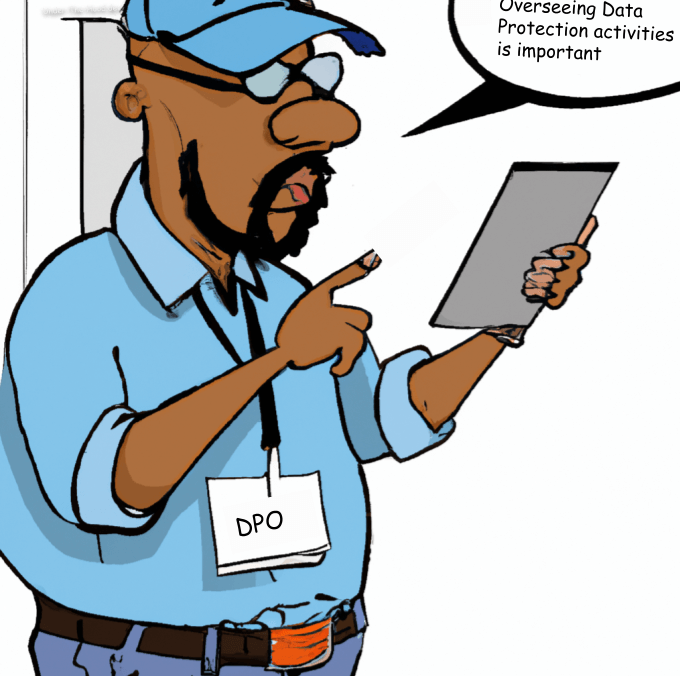Nowadays, personal data has become one of the most valuable commodities. As a result, protecting and securing this data has become a top priority for businesses across the globe. One of the most significant steps taken towards this end is the introduction of the General Data Protection Regulation (GDPR) in the European Union. This regulation, which came into effect on May 25, 2018, has far-reaching implications for businesses and consumers alike.
Understanding how to be GDPR compliant has become essential for organizations that process the personal data of EU citizens, regardless of their location.
In this article, we will explore the steps you can take to ensure your organization is GDPR compliant and the top 10 essential rules for achieving them.
The importance of GDPR compliance for businesses
Non-compliance with GDPR can lead to significant financial penalties, with fines of up to €20 million or 4% of annual global turnover, whichever is higher.
GDPR compliance is not just a legal requirement; it is also essential for building trust with customers and enhancing your organization’s reputation. Demonstrating a commitment to data protection can help organizations differentiate themselves from competitors and position themselves as responsible, trustworthy businesses.
Furthermore, this can also help organizations streamline their data processing activities and reduce the risk of data breaches.
Top 10 essential rules for General Data Protection Regulation Compliance
Rule 1: Obtain consent for data processing
Obtaining explicit and informed consent from individuals before processing their personal data is one of the most critical aspects of Compliance.
- consent must be freely given, specific, and unambiguous
- individuals must have the right to withdraw their consent at any time.
To achieve this, organizations must
- implement clear and concise consent mechanisms, such as checkboxes on web forms;
- ensure that consent is not bundled with other terms and conditions;
- maintain a record of when and how consent was obtained to demonstrate compliance.
Rule 2: Implement data minimization
Data minimization is the practice of collecting and processing only personal data that is necessary for a specific purpose. Under GDPR
- organizations are required to minimize the amount of personal data they collect and store;
- the collected data should only be used for its intended purpose.
To implement data minimization, organizations should
- regularly review the data they hold
- and delete any unnecessary or outdated information.
Rule 3: Ensure data accuracy
GDPR requires organizations to take reasonable steps to ensure that the personal data they process is accurate and up-to-date.

Organizations must implement processes to regularly verify the accuracy of personal data and correct any errors identified.
Inaccurate data can lead to incorrect decisions, negatively impacting individuals and potentially causing harm.

Additionally, individuals should be provided with the means to access and update their personal data, ensuring it remains accurate and current.
Rule 4: Establish data storage limitations
Under GDPR, personal data should not be stored for longer than necessary to fulfill the purposes for which it was collected. Organizations must establish data retention policies that outline the required storage periods for different types of personal data, taking into account legal and regulatory requirements.
To ensure compliance with data storage limitations, organizations should
- implement processes for regularly reviewing and deleting personal data that is no longer needed;
- securely dispose of old hardware and electronic devices containing personal data to prevent unauthorized access.
Rule 5: Maintain data integrity and confidentiality
The GDPR requires organizations to implement appropriate technical and organizational measures to ensure the ongoing confidentiality, integrity, and availability of personal data. This includes protecting personal data from
- unauthorized access
- disclosure
- or destruction.
To maintain data integrity and confidentiality, organizations should implement
- robust access controls;
- encryption;
- regular security audits.
They should also establish a comprehensive data security framework that includes employee training, incident response plans, and regular testing of security measures.
Rule 6: Implement a strong privacy policy
A comprehensive privacy policy is essential for GDPR compliance. This policy should
- clearly outline how an organization collects, processes, stores, and shares personal data;
- provide information on individuals’ rights under GDPR, such as
- the right to access their data
- request rectification or deletion
- and object to processing.
Data rectification refers to the process of correcting or updating inaccurate or incomplete personal data.
This means that if an individual’s personal data held by an organization is found to be incorrect or incomplete, the individual has the right to request that the data be rectified.
Organizations must ensure their privacy policy is
- easily accessible
- written in clear and plain language
- and regularly updated to reflect changes in data processing activities or legal requirements.
Rule 7: Appoint a Data Protection Officer (DPO)
Certain organizations are required under GDPR to appoint a Data Protection Officer (DPO). These include public authorities, organizations whose core activities involve large-scale monitoring of individuals, and those processing large volumes of special categories of personal data.

The DPO is responsible for:
- overseeing data protection activities;
- providing advice to the organization;
- acting as a point of contact for data protection authorities.
Even if not legally required, appointing a DPO can be beneficial for organizations seeking to demonstrate their commitment to GDPR compliance.
Rule 8: Conduct regular data protection impact assessments
A Data Protection Impact Assessment (DPIA) is a systematic process for identifying and mitigating risks associated with data processing activities. Under GDPR, organizations are required to conduct DPIAs for high-risk processing activities, such as large-scale profiling or processing of sensitive personal data.
Regularly conducting DPIAs can help organizations identify potential compliance gaps and implement appropriate measures to address them. It also demonstrates a proactive approach to data protection and can be an essential element of an organization’s GDPR compliance strategy.
Rule 9: Report data breaches promptly
Under GDPR, organizations are required to report personal data breaches to their supervisory authority within 72 hours of becoming aware of the breach. If the breach poses a high risk to the rights and freedoms of individuals, they must also be informed without undue delay.
To comply with this requirement, organizations should have a robust incident response plan in place, including clear processes for detecting, responding to, and reporting data breaches.
Regular training and awareness programs can also help ensure that employees know how to identify and report potential breaches promptly.
Rule 10: Ensure third-party compliance
Organizations often share personal data with third-party vendors and service providers, such as cloud storage providers or marketing agencies. Under GDPR, organizations are responsible for ensuring that these third parties also comply with data protection requirements.
To ensure third-party compliance, organizations should carefully assess the data protection practices of their partners and include GDPR-specific clauses in contracts. They should also conduct regular audits to ensure that third parties adhere to their data protection obligations.
Conclusion: Mastering compliance for a secure and trustworthy business
Achieving GDPR compliance is challenging but essential for organizations that process personal data. By following these top 10 essential rules, organizations can successfully navigate the complex landscape of GDPR, protect the privacy of individuals, and build a secure and trustworthy business that stands out in today’s competitive market.
If you still have questions, feel free to leave the comments below or Connect with Us.
